There is a silence that doesn’t beg to be filled. It lingers in the lines of space, in the precise cut of a chair leg, in the texture of weathered teak. It is not empty. It is complete.
This is the silence Serenique is born from. A design philosophy rooted in intention, stillness, and presence—and one that draws its spirit from Japandi and other design movements including Wabi-Sabi, and a modern evolution of luxury that no longer clings to opulence, but rather seeks peace.
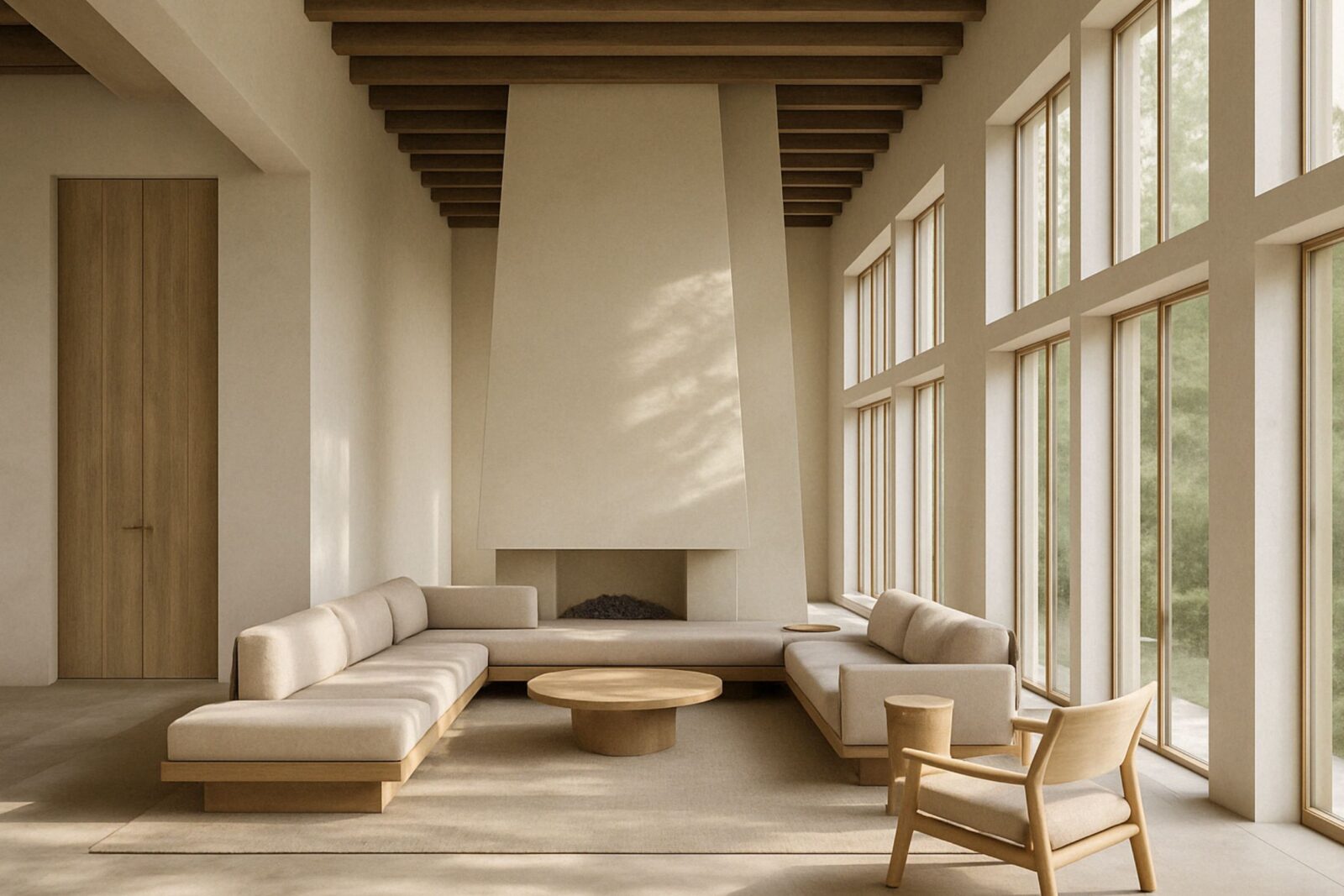
To understand the Serenique Collection is to begin here: in the realm of design as restrained philosophy rather than frivolous decoration. It is an aesthetic not meant to impress, but to center. To invite a slowing down. To offer breath.
The Roots of Japandi: Where Scandinavia Meets Japan
Japandi, the harmonious fusion of Scandinavian functionality and Japanese restraint, was not invented. It was discovered—like a river that had always existed beneath the surface, now flowing into the present.
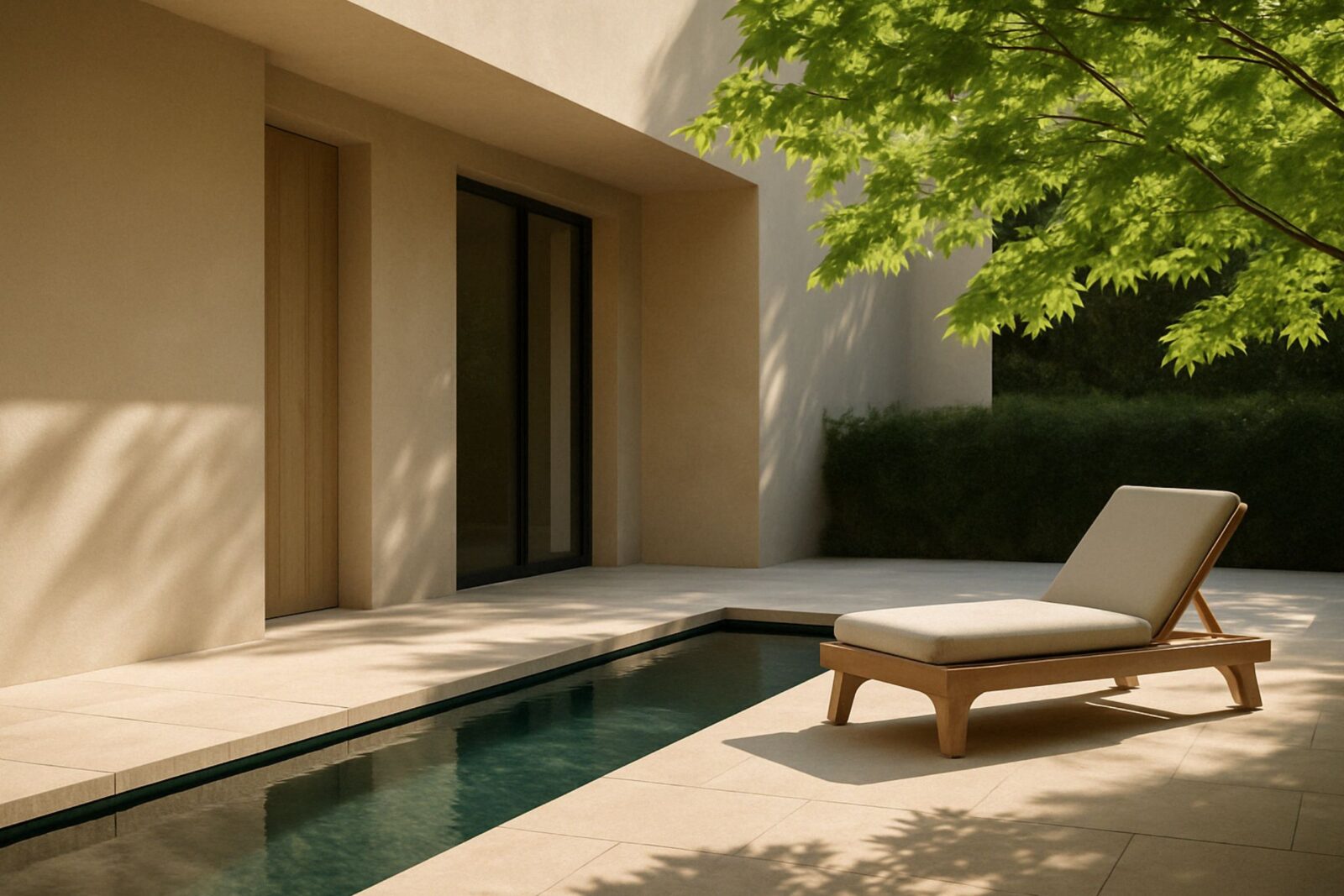
The movement gained traction in the early 2010s as global minimalism shifted toward wellness and simplicity. Designers in both Japan and Scandinavia had already been championing their own parallel traditions: natural materials, craftsmanship, emotional functionality. But the true formalization of “Japandi” began surfacing through curated interiors and product design catalogs around 2015–2018, where the marriage of these values found name and clarity.
Both cultures have long embraced light, shadow, intentionality, and negative space. When brought together, Japandi offers:
• Clean lines and symmetry from Nordic design.
• Organic materials, muted palettes, and handcrafted details from Japanese tradition.
• A shared reverence for nature, restraint, and the power of quiet.
Designers like Norm Architects (Denmark), Keiji Ashizawa (Japan), and studios like Karimoku Case Study helped bring Japandi to global attention, often through serene spatial narratives that united soft geometry and natural wood with sculptural restraint.
The Serenique Collection aligns deeply with this spirit—not as a purist embodiment of Japandi, but as an interpretation. Its sun-bleached teak, clean silhouettes, and refined tactile finishes create emotional neutrality and warmth. This is not just visual balance—it is energetic calm.
Understanding the Difference: Japandi vs. Wabi-Sabi
While often conflated in design vernacular, Japandi and Wabi-Sabi represent very different cultural principles.
Japandi is structured, often polished, and balances minimalism with emotional softness. It’s about harmony through clarity. Form through function. The beauty of balance.
Wabi-Sabi, however, is about impermanence. It celebrates the cracked ceramic, the faded textile, the uneven grain of aging wood. It honors what is raw, asymmetrical, and naturally incomplete.
Serenique may borrow a few tonal notes from Wabi-Sabi—but it is not Wabi-Sabi. There is no deliberate imperfection or rustic incompleteness. This is intentional refinement. It is calm by design, not erosion. This distinction matters.
Serenique, therefore, remains truer to the Japandi ideal—only softened through a unique perspective that deserves its own name.
Janandism: A Modern Reframing of Luxury
“Janandism”—a coined term blending Japanese, Scandinavian, and island minimalism—is not a widely established academic movement, but rather a conceptual lens emerging in the design world, particularly in wellness-forward luxury environments. While references to the term remain sparse in mainstream design literature, it reflects a visible stylistic evolution: the merging of serene, intentional interiors with a more tropical or coastal ease.
At its heart, Janandism builds on Japandi’s values, then layers in warmth: coastal influence, tropical simplicity, and a brighter emotional palette. It’s Japandi with bare feet and open windows. Think Aman resorts. Think Ibiza terraces with Japanese soaking tubs. Think teak under sun-filtered pergolas.
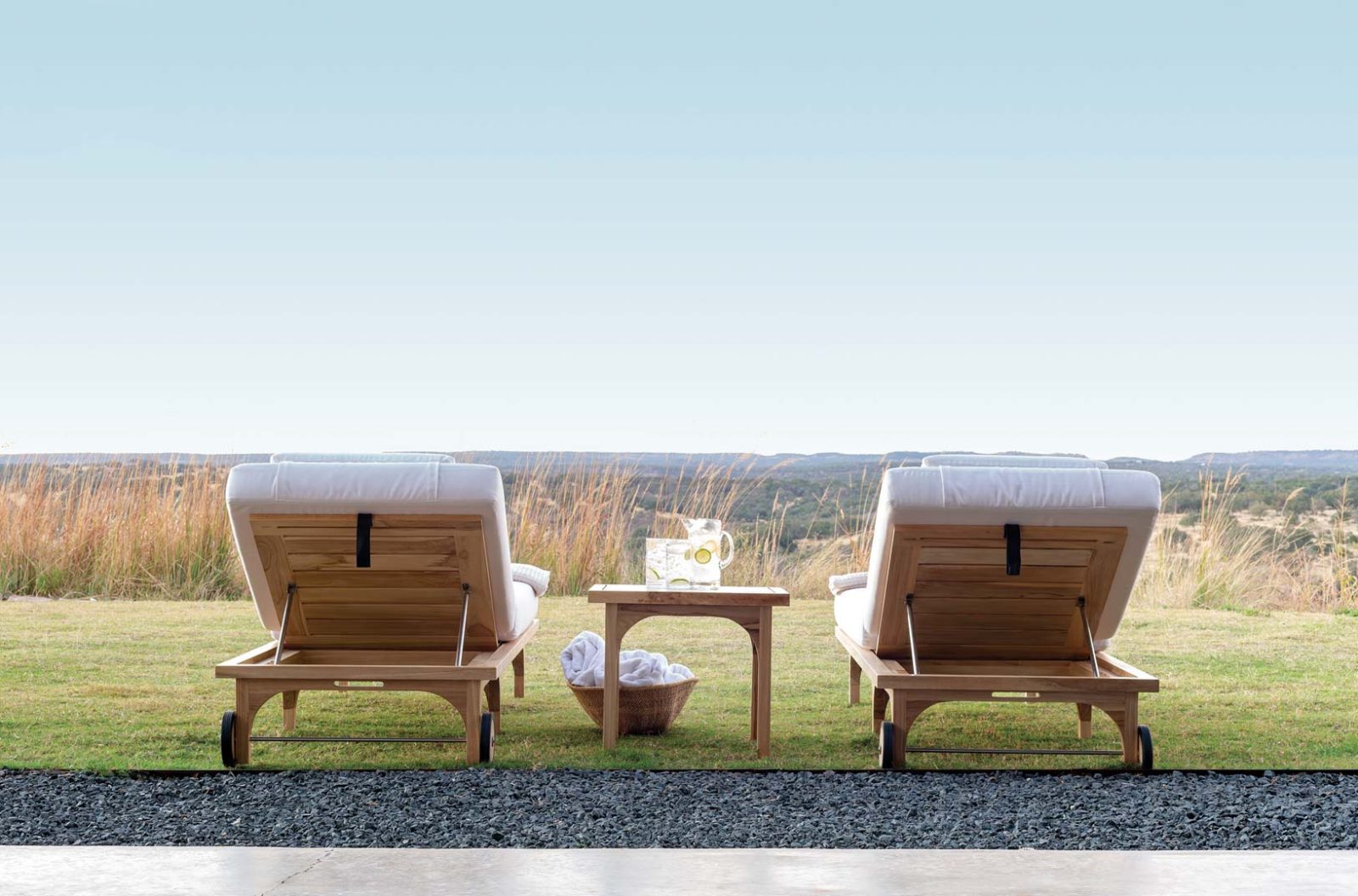
In Serenique, Janandism expresses itself through:
• A devotion to natural texture over artificial shine.
• Furniture designed to promote clarity in a space, like a meditative room in a temple or a sunlit coastal retreat.
• The belief that the home is not a showroom, but a sanctuary.
The result is a collection that breathes. That asks you to slow down. That invites not just sitting, but dwelling.
Design as a Sensory Practice
Look beyond the furniture. What does it feel like to enter a Serenique space?
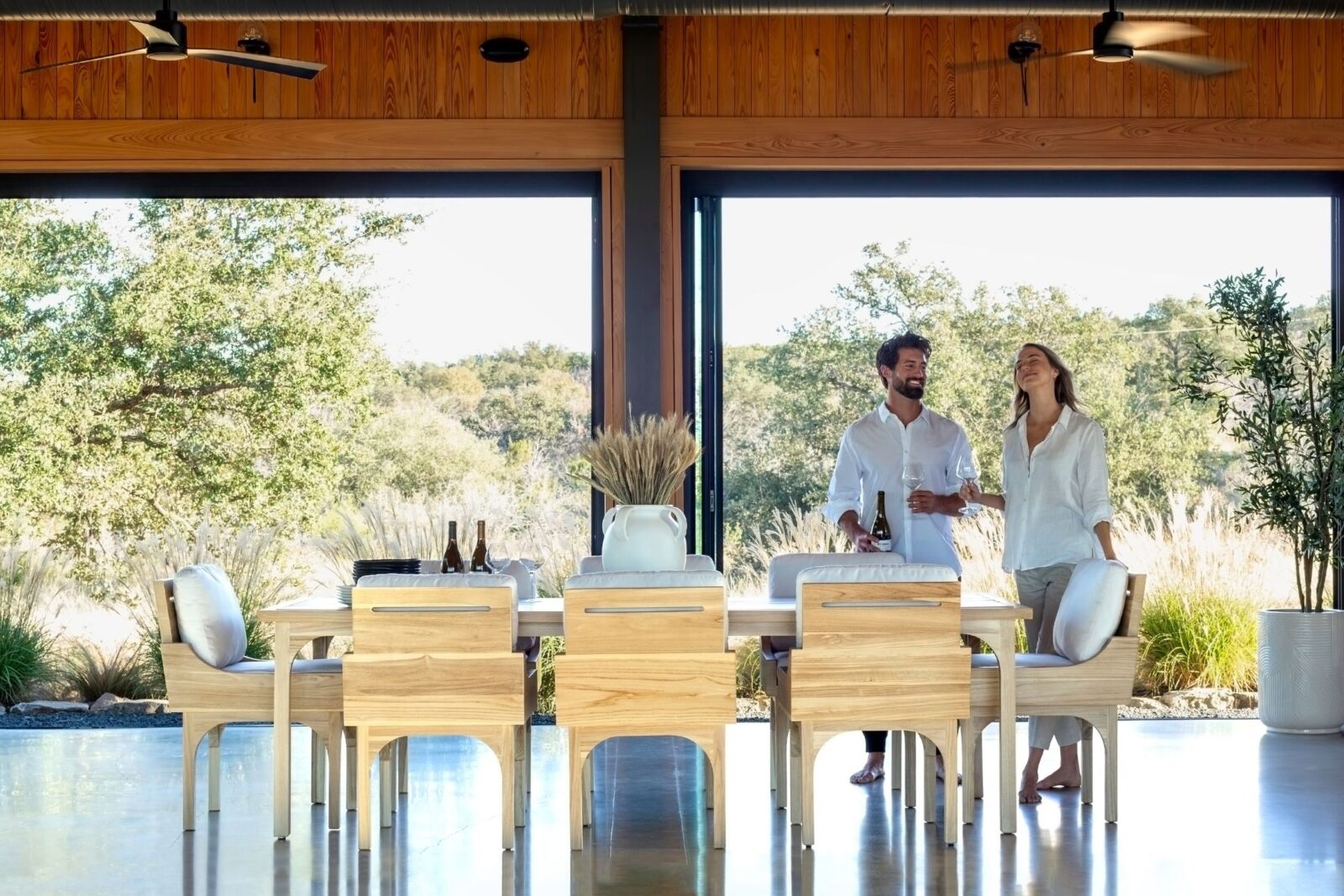
The sun-bleached wheat teak offers visual breath. The perfectly handcrafted cushions absorb noise rather than reflect it. The textures are soft, but never fussy. Every surface has intention. Every line speaks in a whisper.
This is furniture that helps your mind exhale. That fosters presence in a distracted world. That reorients you to what truly matters: time, peace, beauty, air, stillness.
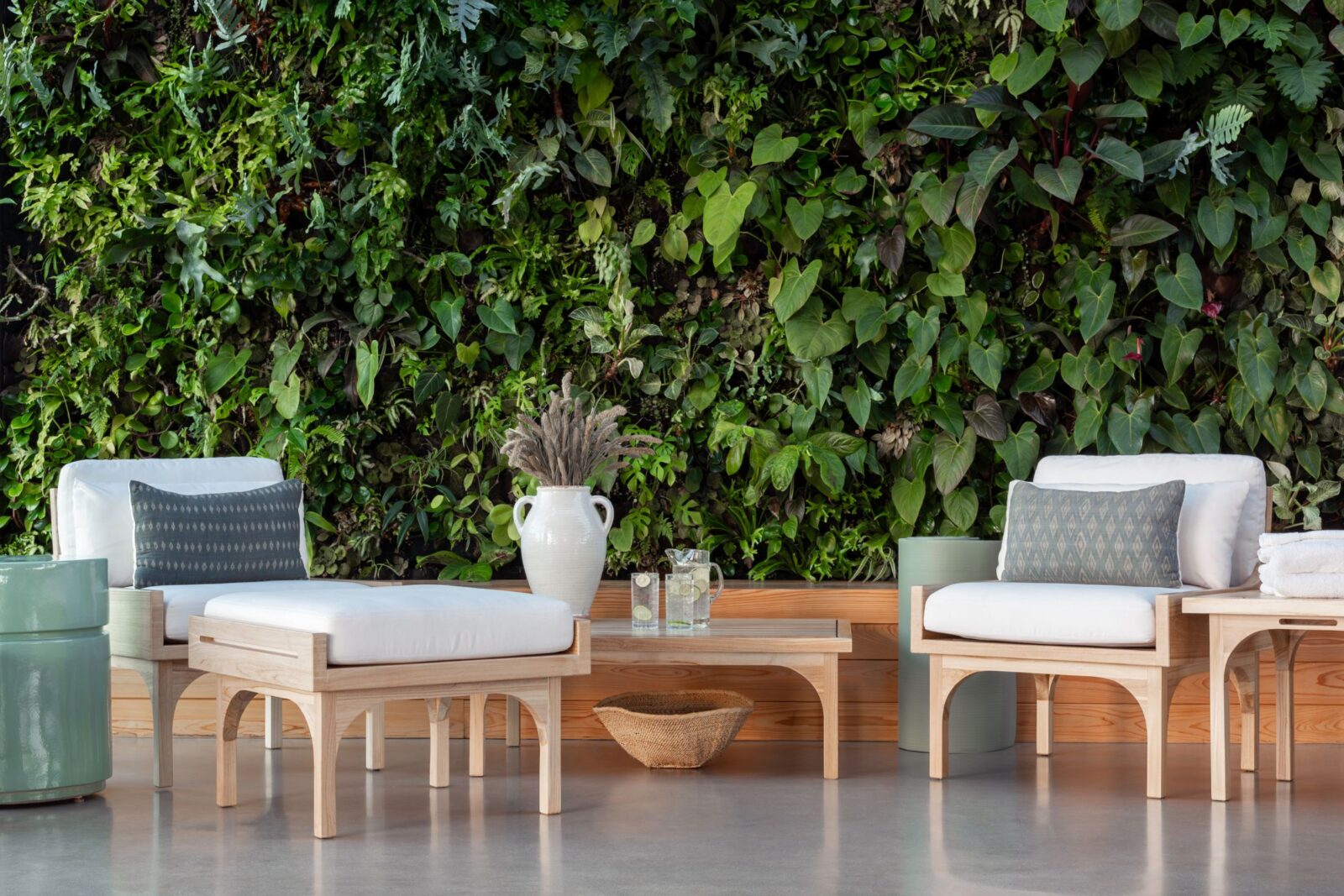
Stillness as a Luxury
For years, luxury was synonymous with excess: heavy ornamentation, high-shine metals, fast-changing trends. But today’s luxury has turned inward. What the modern client desires is not to be seen, but to feel.
To feel safe. To feel calm. To feel at home in their own breath.
Serenique answers that call. It is not merely a design collection—it is a philosophy rendered into form. A whisper carried in teak. A breeze held in cushion. A pause, made physical.
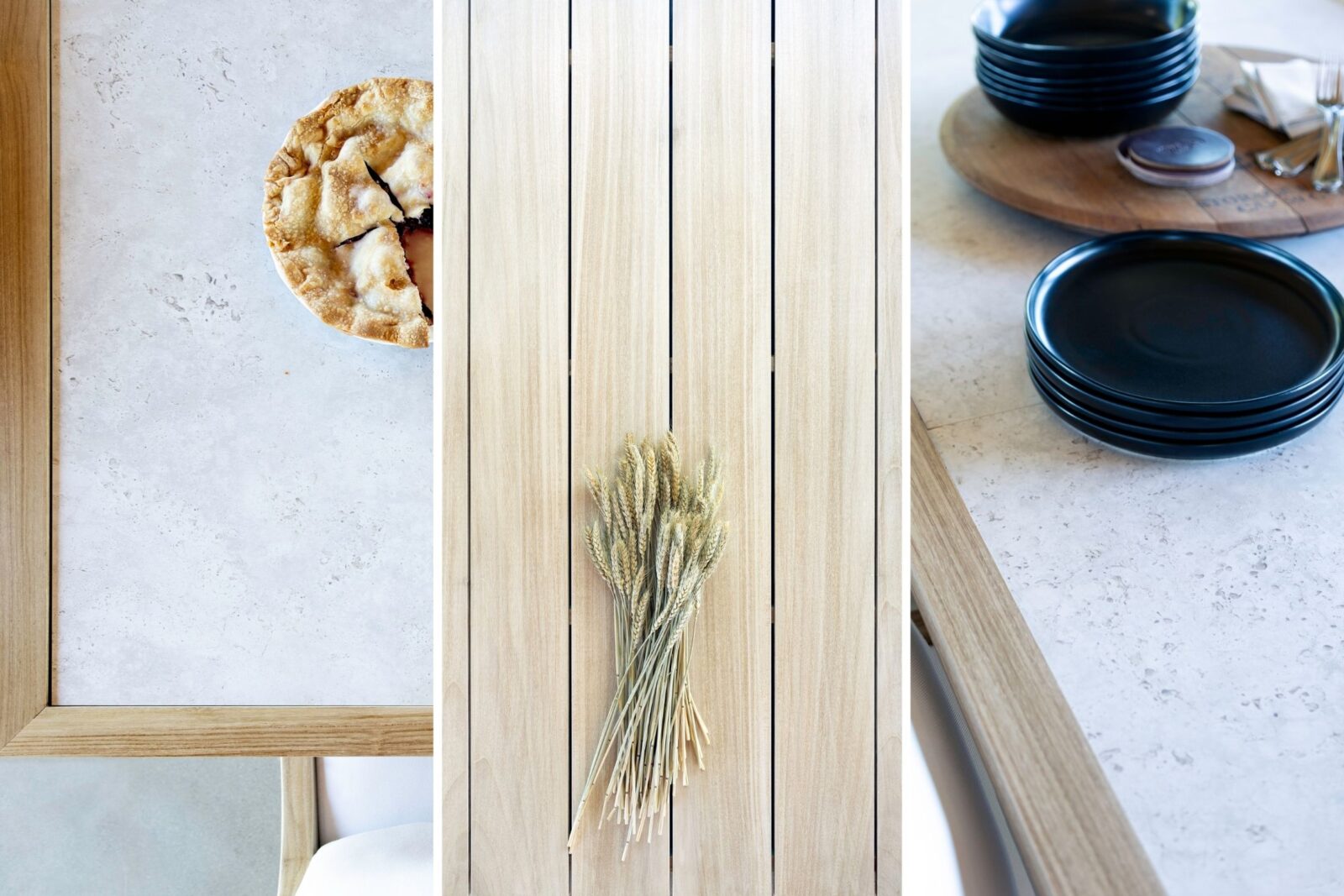
This is the mindset of stillness.
And this is only the beginning.
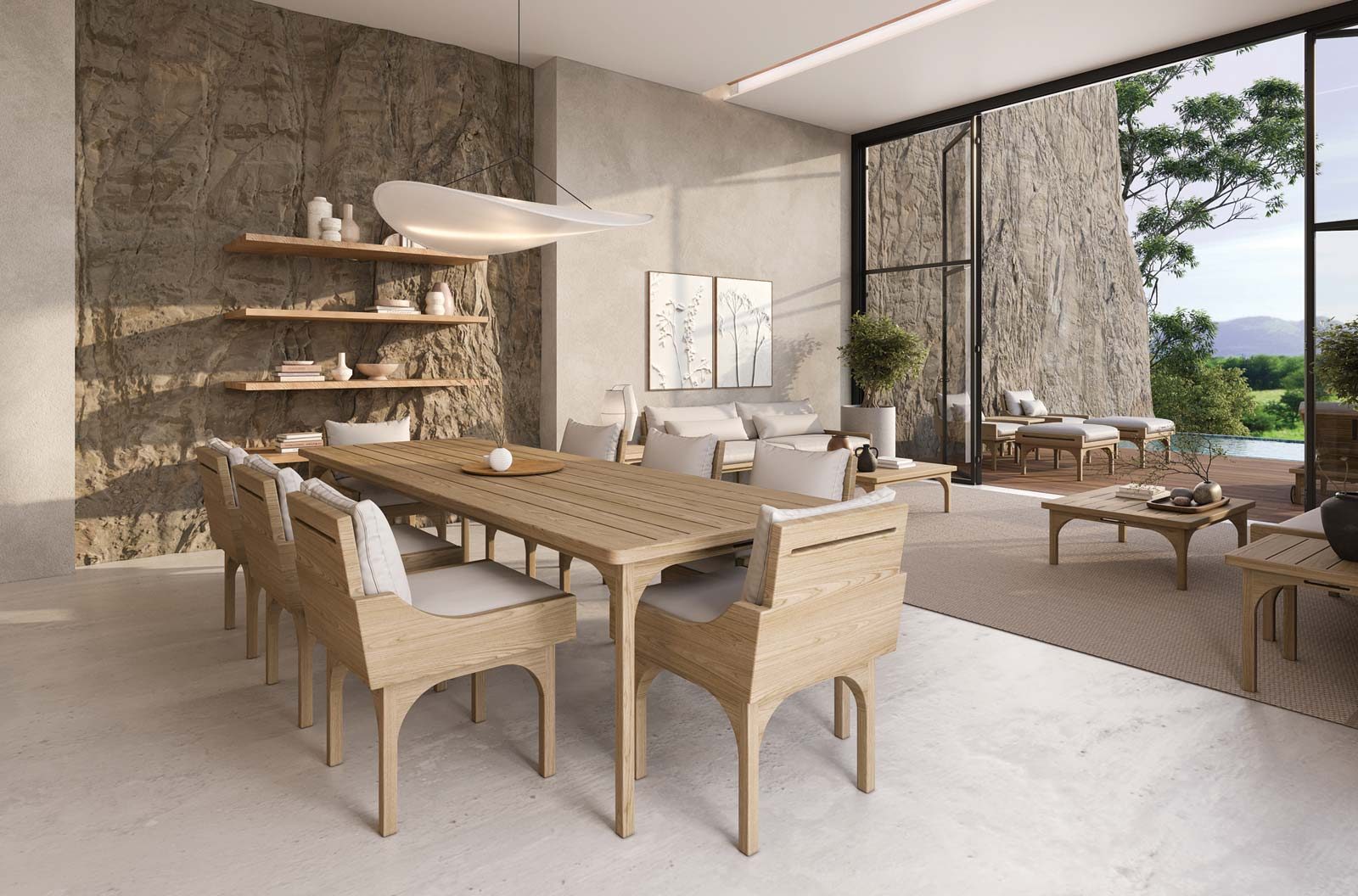
UNTIL NEXT TIME…
Design is more than aesthetics — its a seamless continuum that connects the way we live, work, and gather. Explore new perspectives, timeless craftsmanship, and inspired living with us!
Stay connected to the Seasonal Living Design Continuum Journal. Subscribe today to receive our latest journal entries!